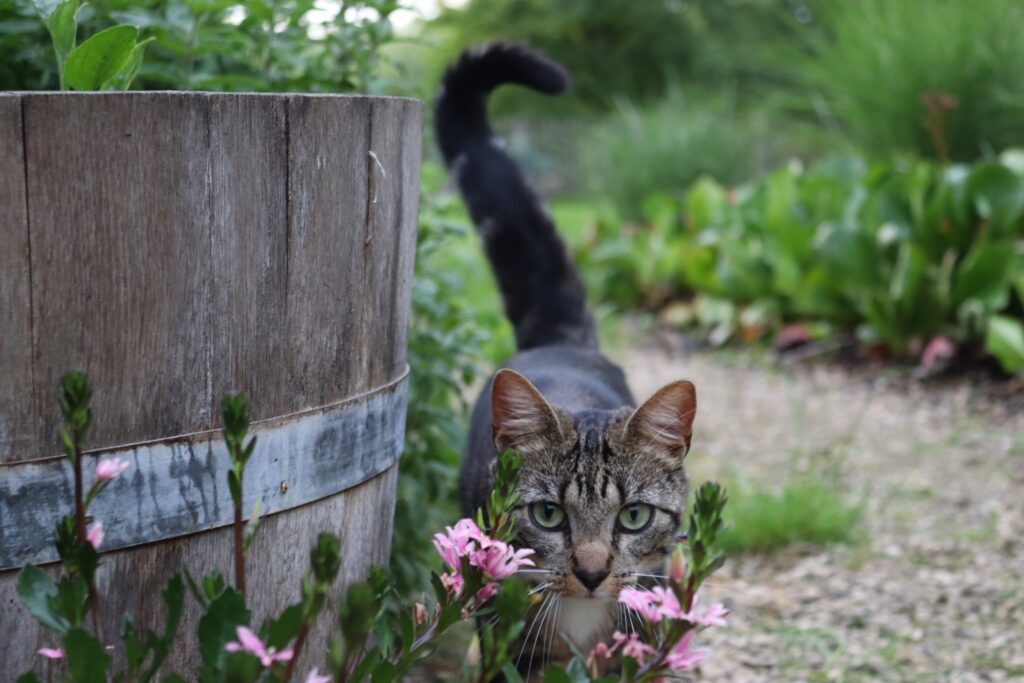Do Kitties Express Themselves Through Tail Movements?
Cats, with their diverse range of vocalizations, body postures, and facial expressions, have a complex language all their own.
While we may not always understand every meow or gesture, one aspect of feline communication that holds a wealth of information is their tail.
Kitties are masters at expressing themselves through tail movements.
In this article, we’ll explore the fascinating world of feline tail language and decipher what your cat might be telling you through their tail.

The Tail as a Communication Tool
A Flexible Appendage
A cat’s tail is a remarkably versatile appendage, capable of conveying a wide range of emotions and intentions.
Unlike dogs, whose tail-wagging is often associated with excitement or happiness, cats use their tails more subtly and expressively.
Tail Position and Emotions
The position of a cat’s tail can provide valuable insights into their emotional state.
It’s essential to consider the entire context, including their body language and surroundings, to interpret their message accurately.
The High Tail
Tail Straight Up
When a cat holds their tail straight up in the air, it’s typically a sign of confidence and contentment.
They are feeling secure and happy in their environment.
This is often accompanied by a relaxed body posture and purring.
Puffed-Up Tail
On the other hand, if your cat’s tail suddenly puffs up like a bottlebrush, it’s a clear indicator of fear or extreme agitation.
They are trying to appear larger to deter a potential threat.
This is often seen when they encounter an unfamiliar animal or situation.
The Low Tail
Tail Tucked Between Legs
A cat tucking their tail between their legs is a sign of extreme fear or submission.
They are trying to make themselves appear smaller and less threatening in the face of danger or perceived dominance.
Slow Tail Flicking
A slow, deliberate tail flick can indicate irritation or annoyance.
It’s often seen when a cat is being pestered by another pet, a person, or even an insect they can’t quite catch.
It’s a warning sign to back off.
The Swishing Tail
Rapid Swishing
If your cat’s tail is swishing rapidly from side to side, it can signal frustration, excitement, or annoyance.
It’s often seen during playtime when they are eagerly stalking a toy or prey.
Swishing with a Fluffed Tail
When a cat combines rapid tail swishing with a fluffed-up tail, it’s a sign of intense agitation or aggression.
This is a clear signal to give them space and avoid any further interaction.
Conclusion
In conclusion, kitties are adept at expressing themselves through tail movements, providing a window into their emotions and intentions.
By paying close attention to your cat’s tail language, you can better understand their needs and feelings.
Remember that while tail movements are a valuable part of feline communication, it’s crucial to consider the entire context
including body language and vocalizations, to interpret their messages accurately.
So, the next time you see your cat’s tail in action, take a moment to observe and decipher their unique form of communication.
It’s a beautiful and intricate language that deepens the bond between you and your feline companion.
FAQs
- Can I use tail language to tell if my cat is in pain?
- Tail language can provide some clues about your cat’s well-being, but it’s essential to look for other signs of discomfort, such as
changes in appetite, grooming habits, or vocalizations.
- Tail language can provide some clues about your cat’s well-being, but it’s essential to look for other signs of discomfort, such as
- What should I do if my cat’s tail is puffed up?
- If your cat’s tail is puffed up, it’s best to give them space and allow them to calm down. Identify and remove any potential sources
of stress or fear.
- If your cat’s tail is puffed up, it’s best to give them space and allow them to calm down. Identify and remove any potential sources
- Are there specific tail movements that indicate my cat is happy?
- A relaxed tail held straight up is often a sign of contentment in cats. However, happiness in cats can also be expressed through
purring, kneading, and other behaviors.
- A relaxed tail held straight up is often a sign of contentment in cats. However, happiness in cats can also be expressed through
- How can I help my cat feel more secure and confident?
- Creating a safe and enriched environment, providing regular play and social interaction, and ensuring a consistent routine
can help boost your cat’s confidence and well-being.
- Creating a safe and enriched environment, providing regular play and social interaction, and ensuring a consistent routine
- Should I ever punish my cat for tail-related behaviors, such as swatting?
- Punishment is not recommended as it can lead to fear and aggression. Instead, focus on positive reinforcement and redirection
to address unwanted behaviors.
- Punishment is not recommended as it can lead to fear and aggression. Instead, focus on positive reinforcement and redirection
